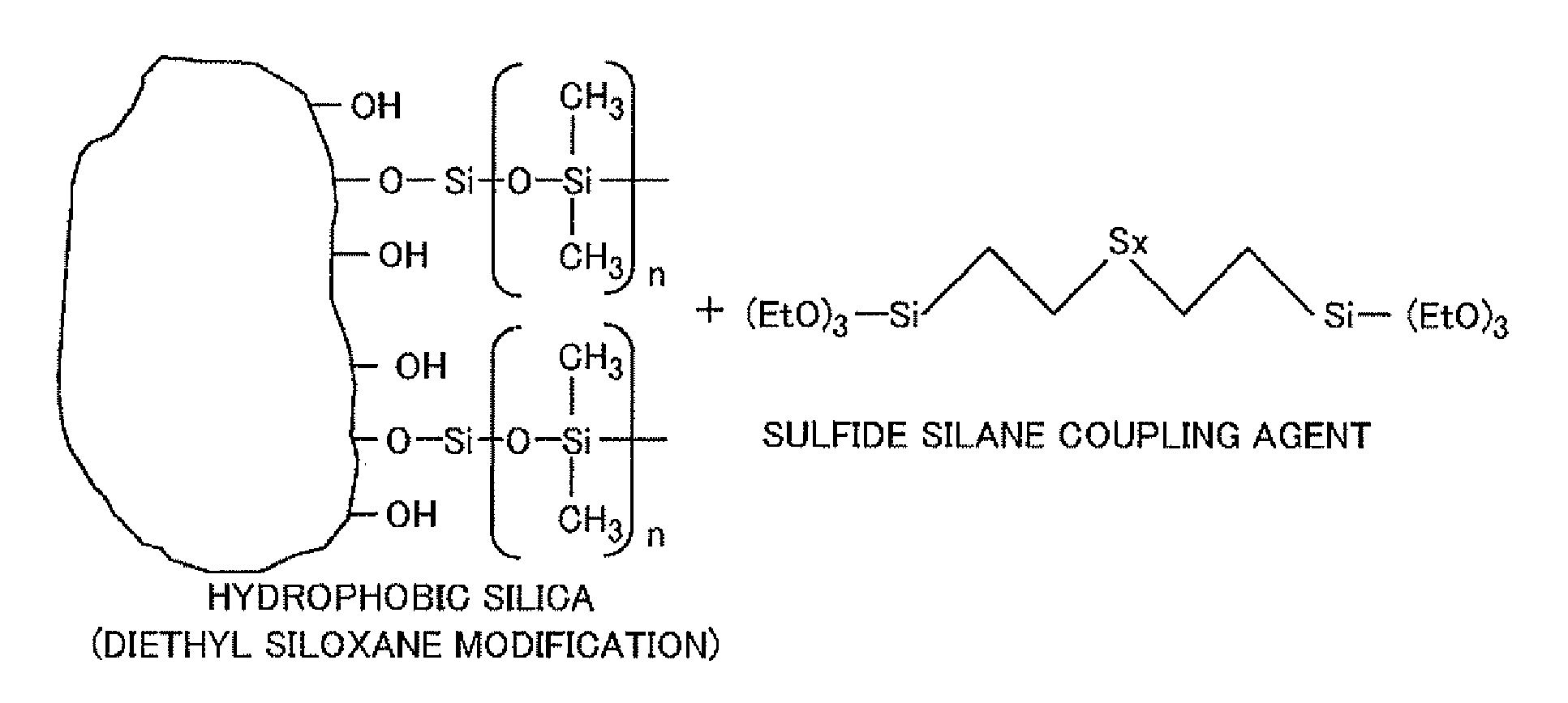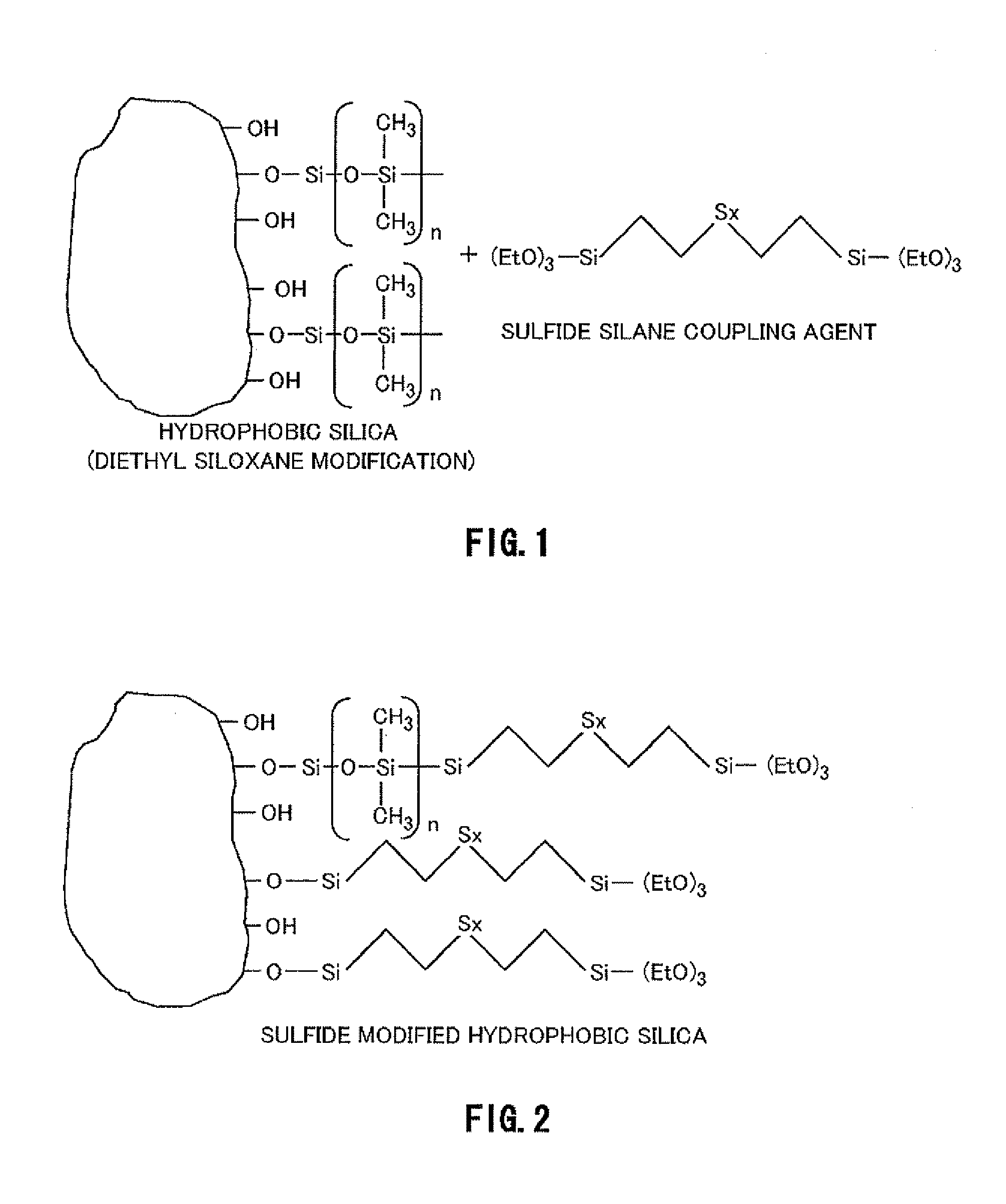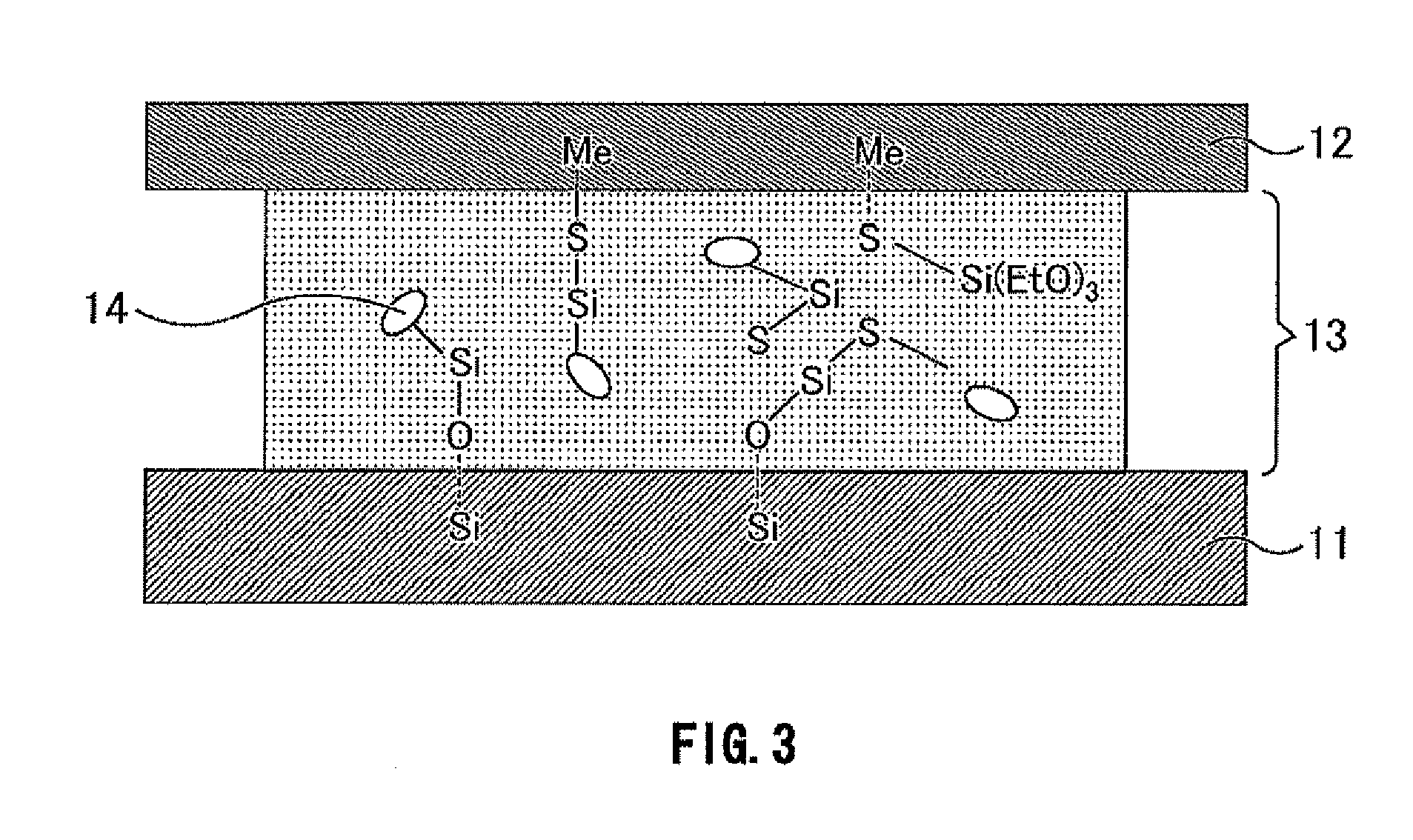Anisotropic conductive material and method for manufacturing the same
a technology of anisotropic conductive material and manufacturing method, which is applied in the direction of power cables, non-metal conductors, cables, etc., can solve the problems of low continuity resistance, low dispersion, and inability to obtain high adhesive strength, and achieve low continuity resistance and high adhesive strength.
- Summary
- Abstract
- Description
- Claims
- Application Information
AI Technical Summary
Benefits of technology
Problems solved by technology
Method used
Image
Examples
example 1
Production of Sulfide Silane Modified Hydrophobic Silica A
[0055]5 parts by mass of bis(3-(triethoxysilyl) propyl)disulfide (product name: KBE846, manufactured by Shin-Etsu Chemical Co., Ltd.) was dissolved in 100 parts by weight of methyl-ethyl-ketone, whereby a treatment liquid was prepared. Next, 10 parts by mass of dimethyl siloxane modified silica particles having an average particle diameter of 14 nm were added as hydrophobic silica to 105 parts by weight of this treatment liquid, and the treatment liquid was left standing at 70 degrees C. for 2 hours, and then filtration is performed to recover silica particles, followed by vacuum drying, whereby sulfide silane modified hydrophobic silica A was obtained.
[0056](Production of Anisotropic Conductive Film)
[0057]42 parts by mass of phenoxy resin (product name: PKHC, manufactured by Tomoe Engineering Co., Ltd.) as a film forming resin, 40 parts by mass of epoxy acrylate (product name: EB600, manufactured by DAICEL-CYTEC Company Ltd....
example 2
Production of Anisotropic Conductive Film
[0061]An anisotropic conductive film was produced in the same manner as in Example 1, except that an amount of the phenoxy resin (product name: PKHC, manufactured by Tomoe Engineering Co., Ltd.) contained was 46 parts by mass, and an amount of the sulfide silane modified hydrophobic silica A contained was 11 parts by mass.
[0062](Evaluation Result)
[0063]Continuity resistance of the mounting structure obtained by bonding the COF and the IZO coating glass together was measured, and as a result, the initial resistance was 3.8Ω, and the resistance after the introduction at 85 degrees C. and 85% RH for 500 hours was 5.6 Ω.
[0064]Adhesive strength of the mounting structure obtained by bonding the COF and the IZO coating glass together was measured, and as a result, the initial strength was 8.8 N / cm, and the strength after the introduction at 85 degrees C. and 85% RH for 500 hours was 6.9 N / cm. In addition, adhesive strength of the mounting structure ...
example 3
Production of Anisotropic Conductive Film
[0065]An anisotropic conductive film was produced in the same manner as in Example 1, except that an amount of phenoxy resin (product name: PKHC, manufactured by Tomoe Engineering Co., Ltd.) contained was 49 parts by mass and an amount of the sulfide silane modified hydrophobic silica A contained was 8 parts by mass.
[0066](Evaluation Result)
[0067]Continuity resistance of the mounting structure obtained by bonding the COF and the IZO coating glass together was measured, and as a result, the initial resistance was 3.0Ω, and the resistance after the introduction at 85 degrees C. and 85% RH for 500 hours was 4.7 Ω.
[0068]Adhesive strength of the mounting structure obtained by bonding the COF and the IZO coating glass together was measured, and as a result, the initial strength was 8.5 N / cm, and the strength after the introduction at 85 degrees C. and 85% RH for 500 hours was 6.5 N / cm. In addition, adhesive strength of the mounting structure obtain...
PUM
| Property | Measurement | Unit |
|---|---|---|
| particle diameter | aaaaa | aaaaa |
| particle diameter | aaaaa | aaaaa |
| particle diameter | aaaaa | aaaaa |
Abstract
Description
Claims
Application Information
 Login to View More
Login to View More - R&D
- Intellectual Property
- Life Sciences
- Materials
- Tech Scout
- Unparalleled Data Quality
- Higher Quality Content
- 60% Fewer Hallucinations
Browse by: Latest US Patents, China's latest patents, Technical Efficacy Thesaurus, Application Domain, Technology Topic, Popular Technical Reports.
© 2025 PatSnap. All rights reserved.Legal|Privacy policy|Modern Slavery Act Transparency Statement|Sitemap|About US| Contact US: help@patsnap.com



